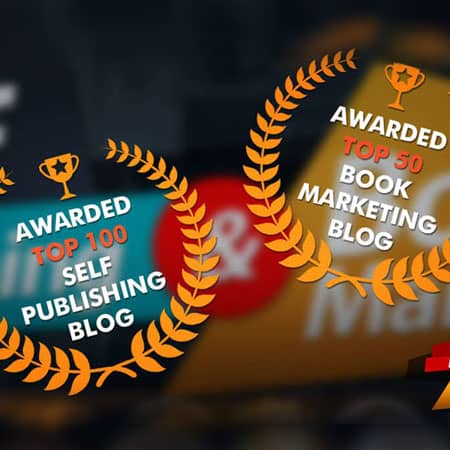
Andrea Waltz - September 19, 2020 - 
A Book Title – The Art and Science of Writing a Book Title!
Three important rules about deciding on the perfect title for your book! Choosing a great title for your book is both art and science.
Before we get into detail of a book title, we need to separate fiction and non-fiction titles. This is important because the rules between these two types of book vary greatly and titles are no exception.
An author has far more leeway with fiction titles than non-fiction.
Unlike non-fiction, a fiction book is not trying to solve a specific problem. Well, besides helping the reader escape and enjoy a good story.
To that end, some authors may attempt to convey the genre or perhaps an emotion through their title.
For example, the title, “The Case of the Missing Mouse” suggests a cozy mystery. The title, “Damaged Soul” sounds like a thriller or even horror.
But truthfully, the rule for fiction titles is, there aren’t really rules!
Consider the best-selling horror book by Stephen King entitled, Carrie. That doesn’t exactly tell you much at all does it?
So, let’s set fiction aside and move onto non-fiction which can be a little more tricky.
As creative types, most authors don’t like following rules. And granted, there are always outliers and exceptions. But, from experience, here are 3 rules we highly recommend you follow.
Rule #1: The Book Title Identifying the Problem or Solution
Non-fiction books are focused on sharing information and identifying a problem or problems people have along with a solution (or many solutions) for that problem.
A good book title does one of two things, ideally both.
#1. Explains what the book is about (the problem it solves).
#2. Makes you want to read the subtitle which will explain what the book is about (the problem it solves).
Some titles focus on the solution in the book title and leave the problem they solve in the subtitle or in the book description.
Consider the following book titles.
Book title: “Getting Things Done”
Subtitle: The Art of Stress Free Productivity
Analysis: It doesn’t get much simpler or better than this. The problem is, people need to get things done. Both the book title and subtitle explain the outcome you get from reading the book.
Note: there’s no need to throw the words “How To” on the front of “Getting Things Done” to make it “How to Get Things Done”. That just makes the title needlessly longer. Something we will deal with in Rule #2.
Book title: “Blue Ocean Strategy”
Subtitle: How to Create Uncontested Marketspace and Make the Competition Irrelevant
Analysis: The book title is little odd isn’t it? But we think it’s intriguing enough to move your eye to the subtitle which definitely explains what the book is about.
Book title: “Make Your Bed”
Subtitle: Little Things That Can Change Your Life… And Maybe the World
This is a message book (as opposed to a how to/problem solving book) with a great book title. It plays off something we all say or have heard, followed by a big promise in the subtitle.
Book title: “How to Stay Alive in the Woods”
Subtitle: A Complete Guide to Food, Shelter and Self-Preservation Anywhere
Analysis: This book title is so good you almost don’t need a subtitle but it further defines what the book is about for the reader. You could also get rid of the How To on the front. And that brings us to Rule 2!
Rule #2: Make the Book Title Short, Subtitle Long
So, the subtitle does not have to be long, but it can be.
However, when it comes to the book title, we beg of you – keep the title to two-five words ideally.
There’s been a trend to overdo words in the title to “game” the search function on Amazon. In other words, to stuff so many words into the title, that Amazon shows your book to anyone who could be searching for it in its category.
Here is what it looks like.
The title: “Super Golfer” would be changed to “The Secret Strategies of Super Golfers for Anyone Who Wants to Master the Game of Golf and Get Under Par Every Time.”
You aren’t doing anyone any favors with a title like this, including your book.
Doing this simply looks amateurish because no “traditional publisher” would approve of this title.
Such a wordy title should become the subtitle, not the book title.
Here is one example of a great short title:
Book title: “Get the Guy”
Subtitle: Learn Secrets of the Male Mind to Find the Man You Want and the Love You Deserve
A short punchy book title with a subtitle that clearly explains what the book is about.
Finally, consider the earlier title.
Book title: “How to Stay Alive in the Woods”. You could actually change that to: “Stay Alive! Or, Survive the Woods”.
You could do that because the subtitle is so explanatory. But, why would you?
It might look better on the book cover design to have a shorter book title.
Or, it might test better.
We are big fans of testing book titles and highly recommend using a service called Pickfu which allows you test the opinions of people (50, 100 or more at a time) using a simple survey software platform.
Speaking of surveys, we have found that the one thing that drives people crazy, is when they don’t understand something. This is true in all areas of marketing including book titles. Which brings us to the final rule.
Rule #3: Don’t Be Too Clever
What do I mean by this?
Be careful about coming up with a title that is so odd, no one gets it.
Strive for clarity!
Although you like it and it makes sense after reading the book, it could actually “unsell” readers.
Now wait, you say. What about a book like “Who Moved My Cheese”. That’s the weirdest book title ever. And it sold millions of copies.
Well, let’s look at the subtitle: “An A-mazing Way to Deal with Change in Your Work and Your Life”. That’s pretty good, right?
So, yes don’t be too clever is the rule.
Here’s when you can break that rule: when your subtitle explains exactly what the book is about in a succinct and powerful way. In that way, rule three is an expansion from the first rule.
Consider the title “Will It Fly”?
That title, on its own, is a little mysterious and could be confusing. Is it about the first airplane?
However, the subtitle fully explains what the book is about: “How to Test Your Next Business Idea So You Don’t Waste Your Time and Money”.
The book title “One More Try”. Same thing. What does it mean?
The subtitle clearly explains: What to Do When Your Marriage Is Falling Apart.
If you are going to be “clever” with your title, make sure your subtitle is very clear.


